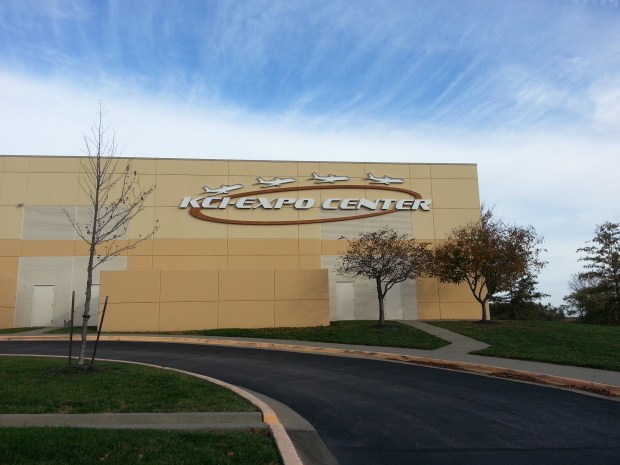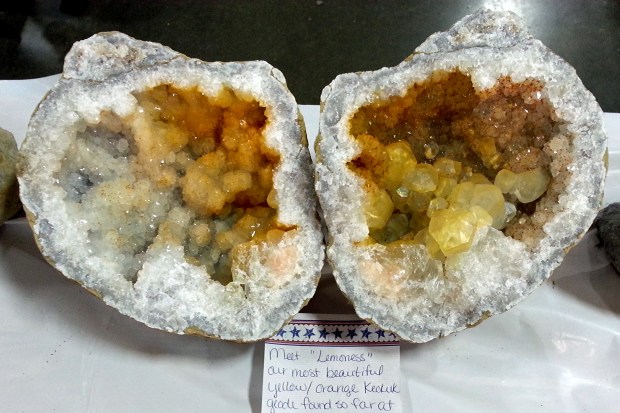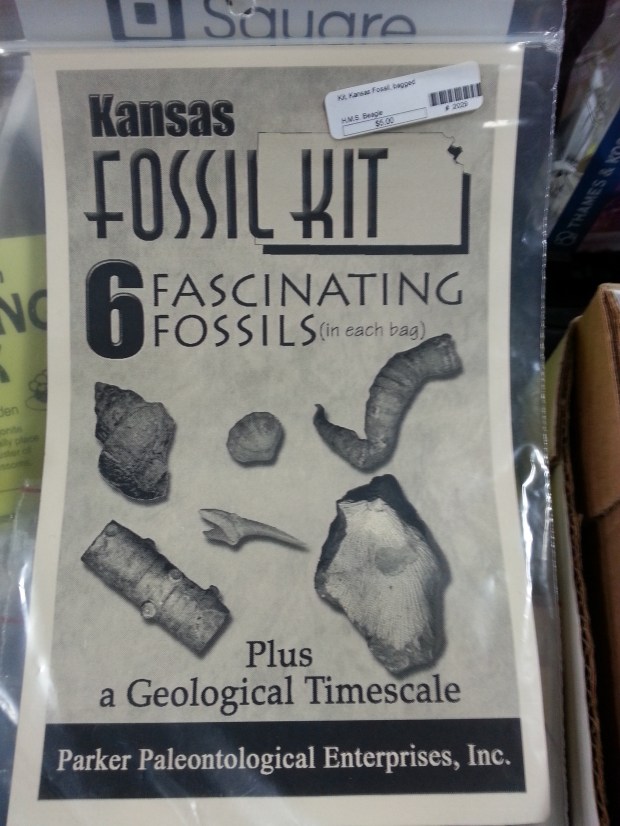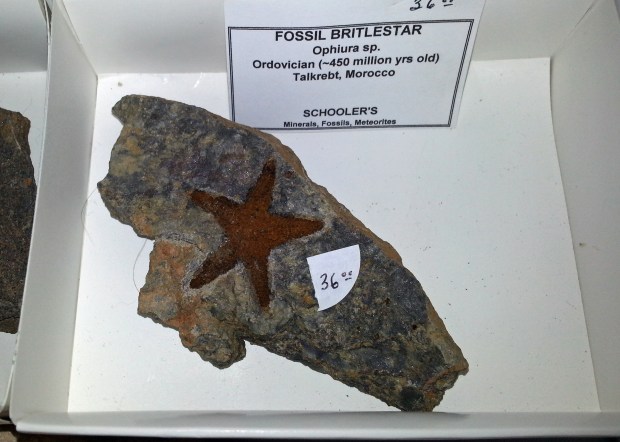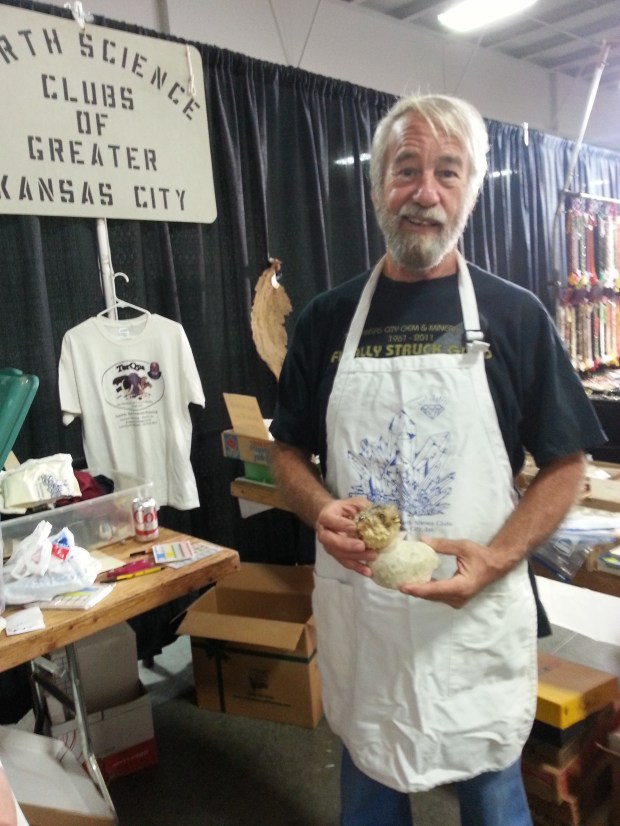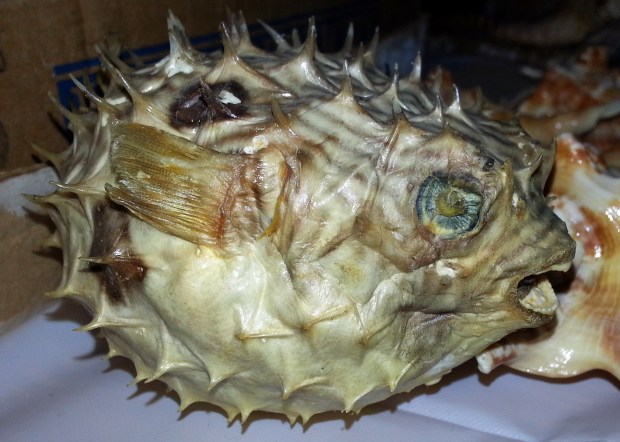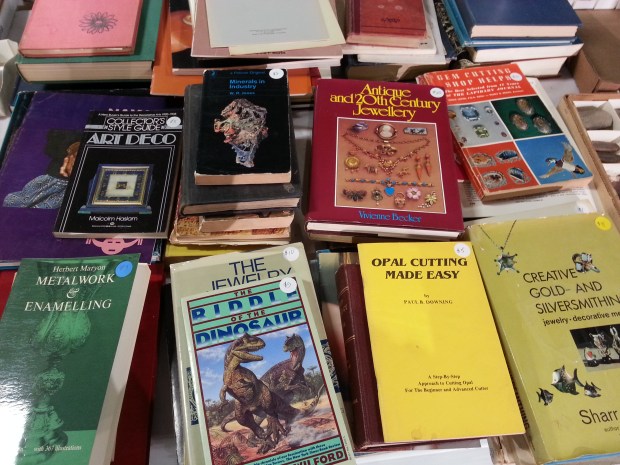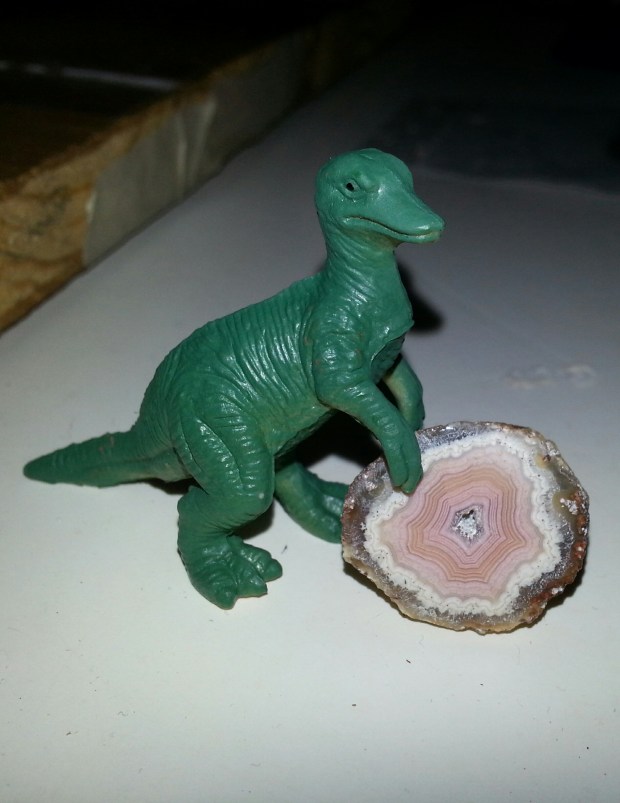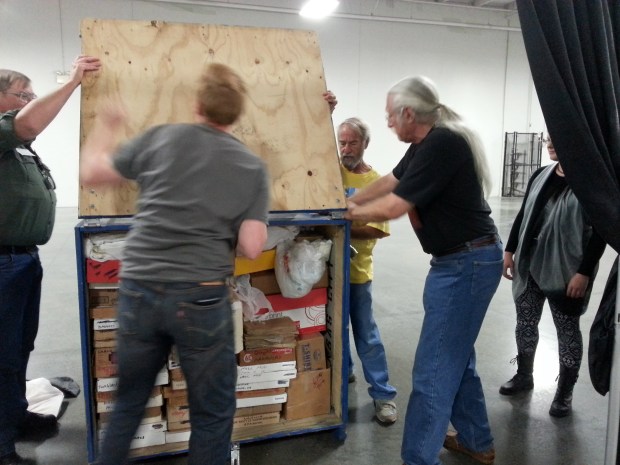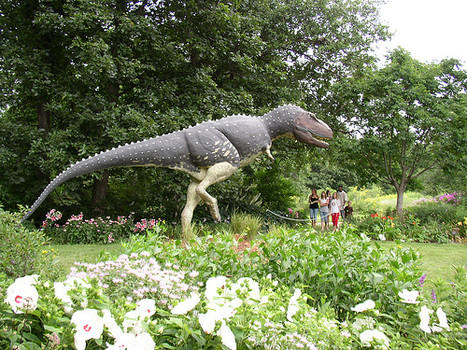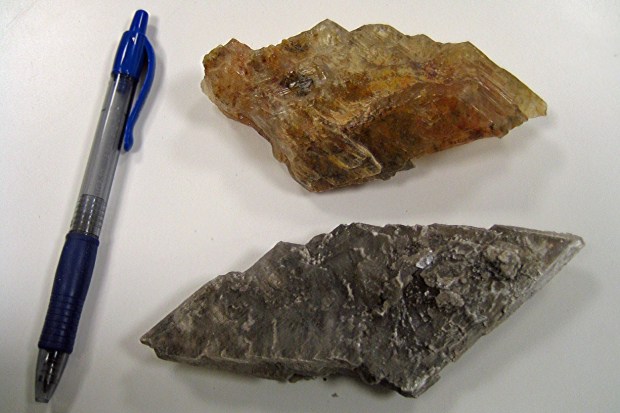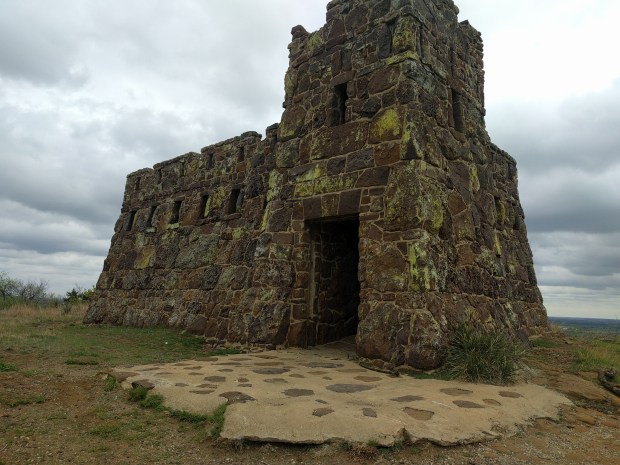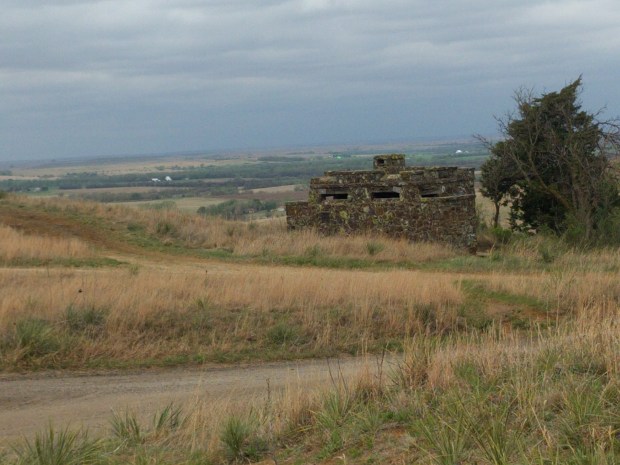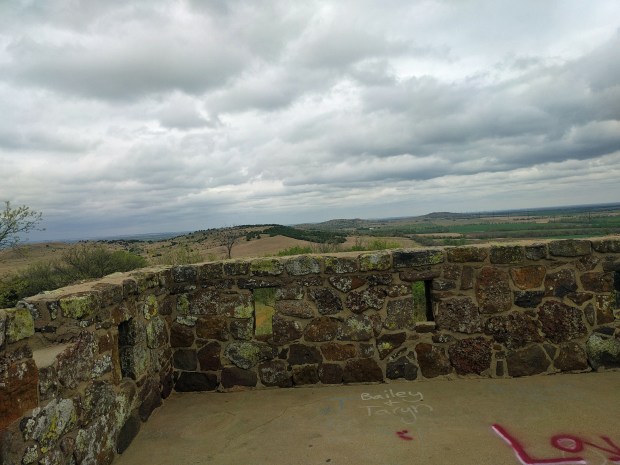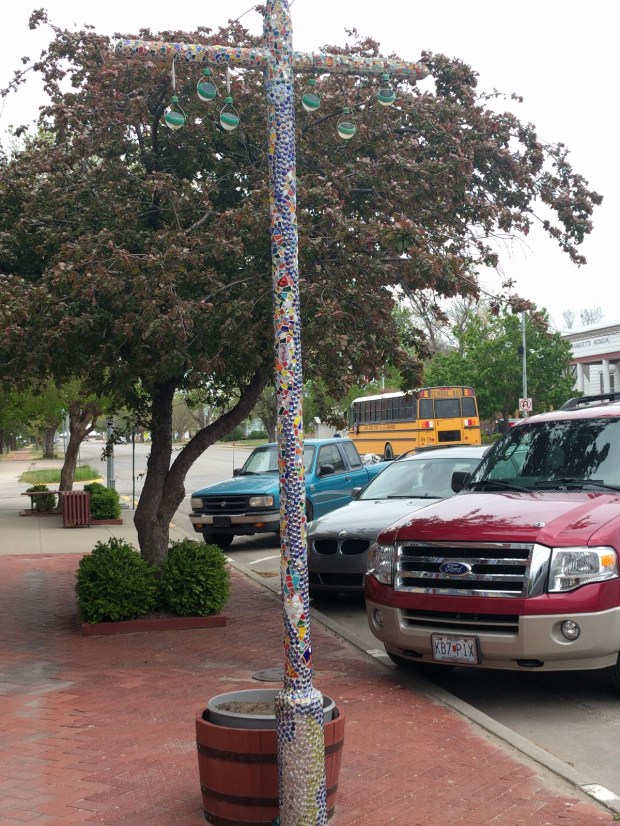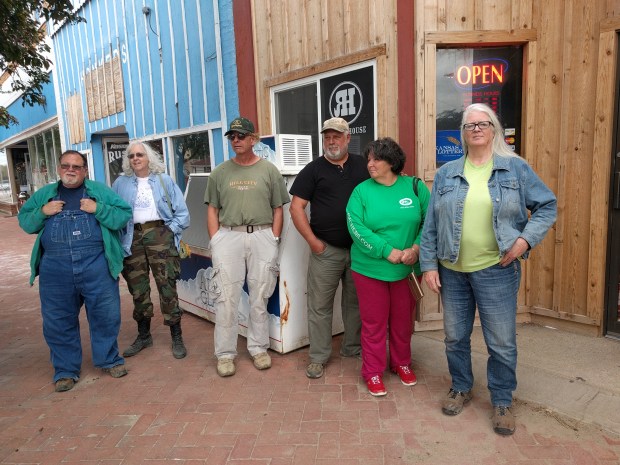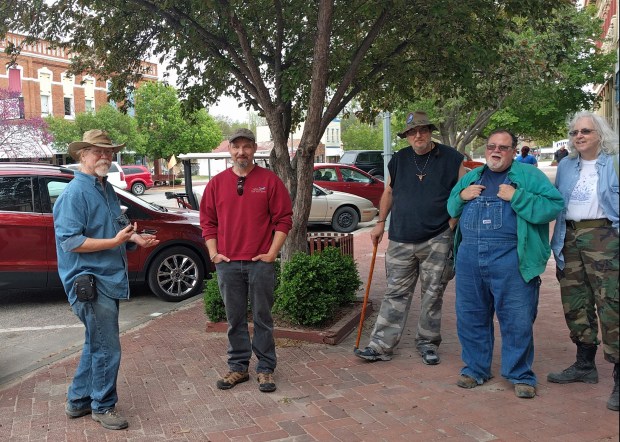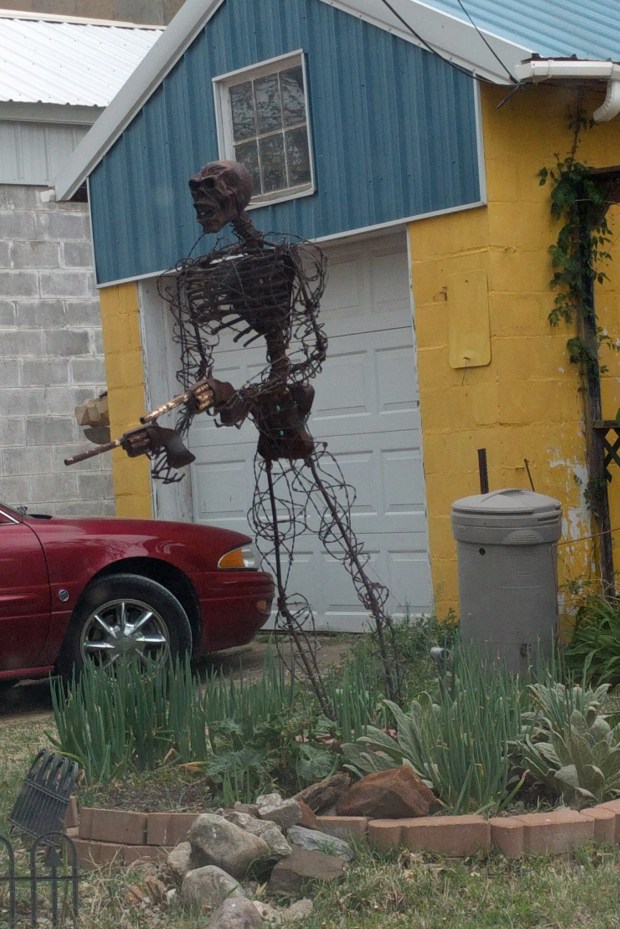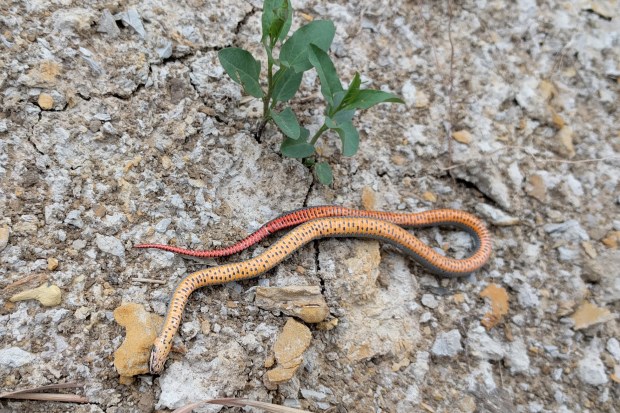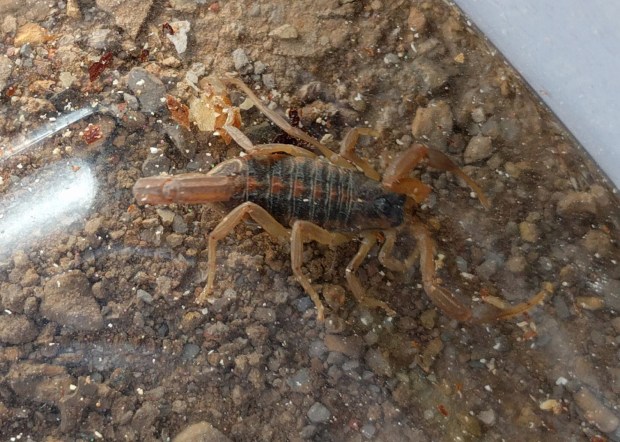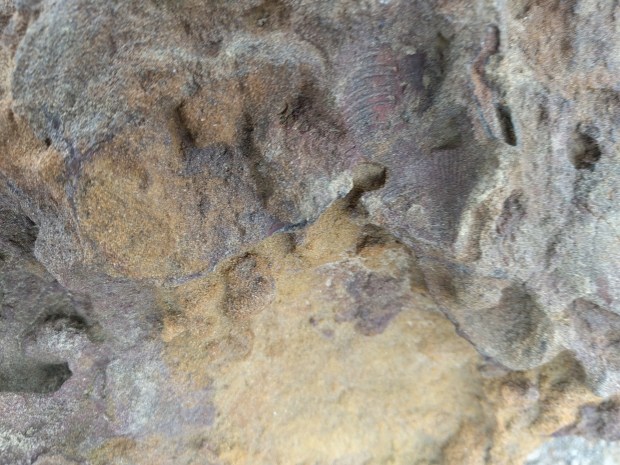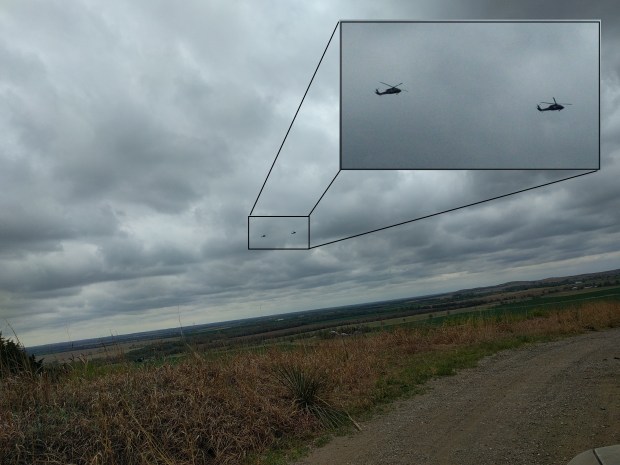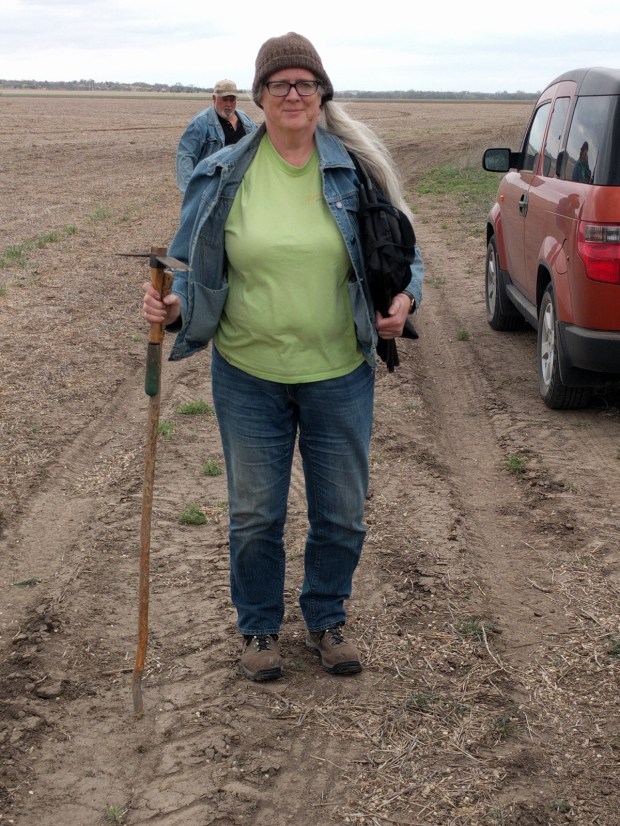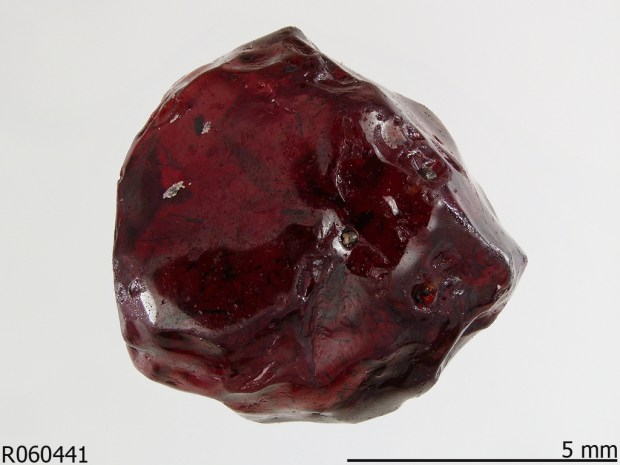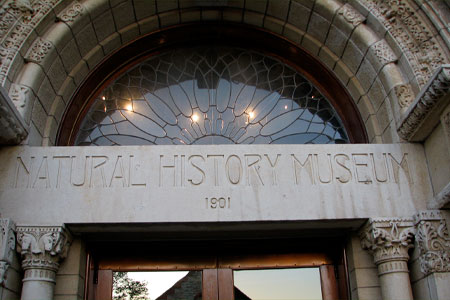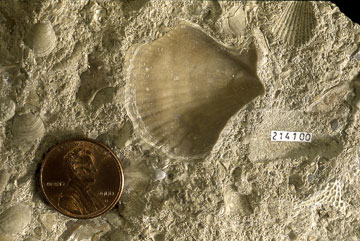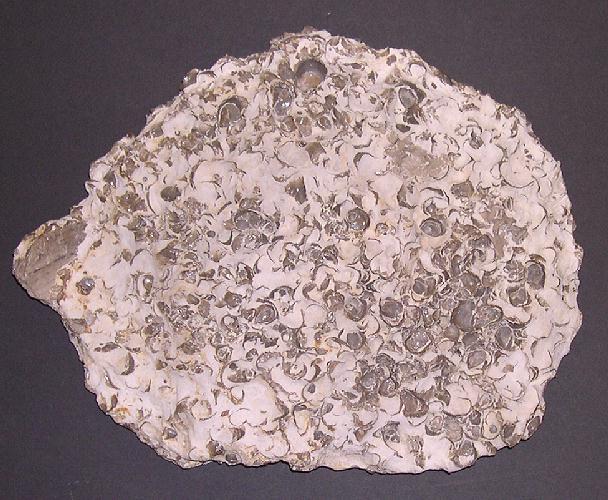The Spring 2017 Gem and Mineral Show was very successful. The parking lot was filled to capacity and we made over $3000 for the scholarship fund. I think it helped that it was so cold on Saturday, because people wanted to do something indoors. Here are some of the highlights.
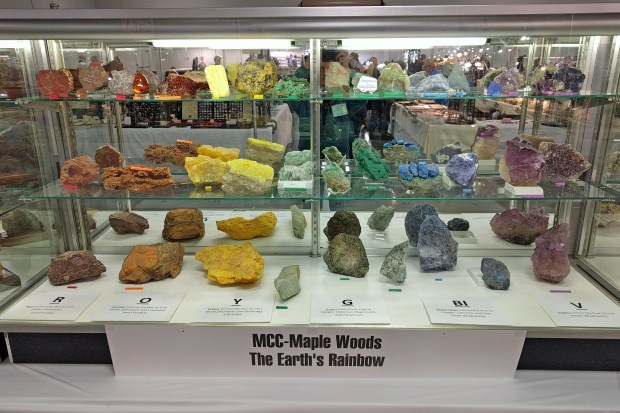
My favorite exhibit: The Earth’s Rainbow by Maple Woods Community College. It shows minerals of every color and how they get their colors. Photo by Stephanie Reed

Geological features of Missouri made out of minerals by Susan Judy (Stone Quilt Design) Unfortunately, it was already sold when I saw it. Photo by Stephanie Reed
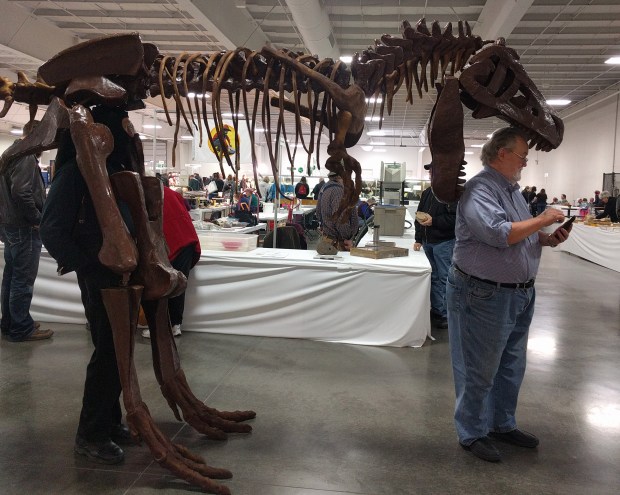
Mr. Bones was wondering what was so interesting on this person’s phone. Photo by Stephanie Reed
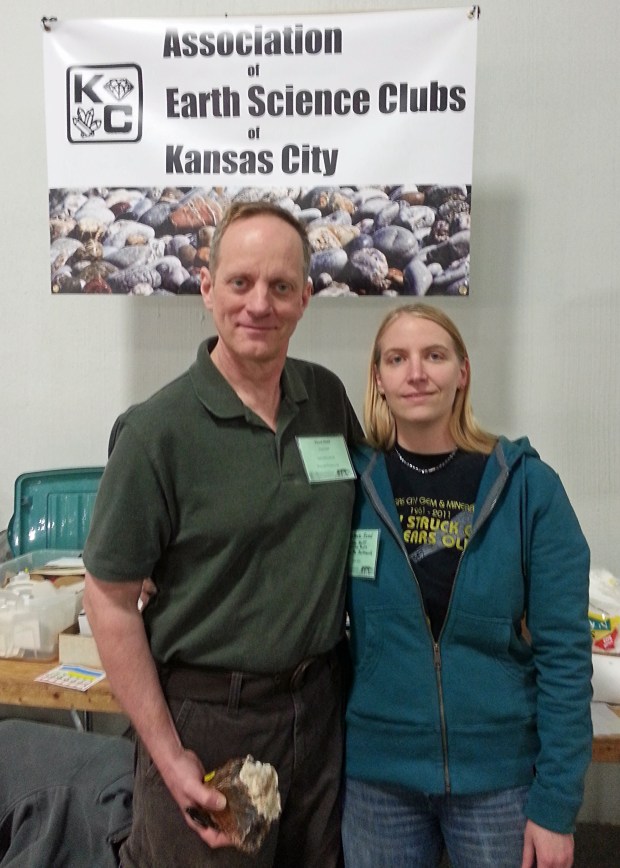
David and Stephanie Reed showing off the new Association banner. Photo by Bob
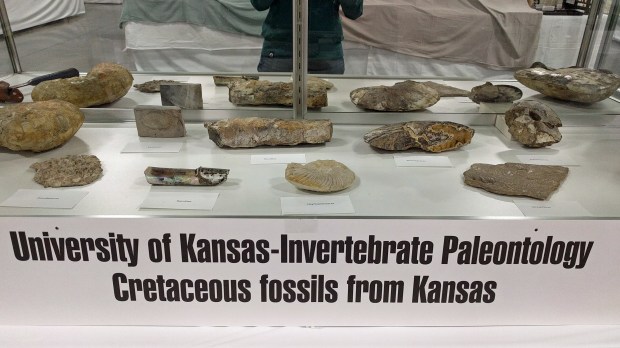
Cretaceous fossils from Kansas, displayed by KU. The iridescent baculite is especially nice. Photo by Stephanie Reed
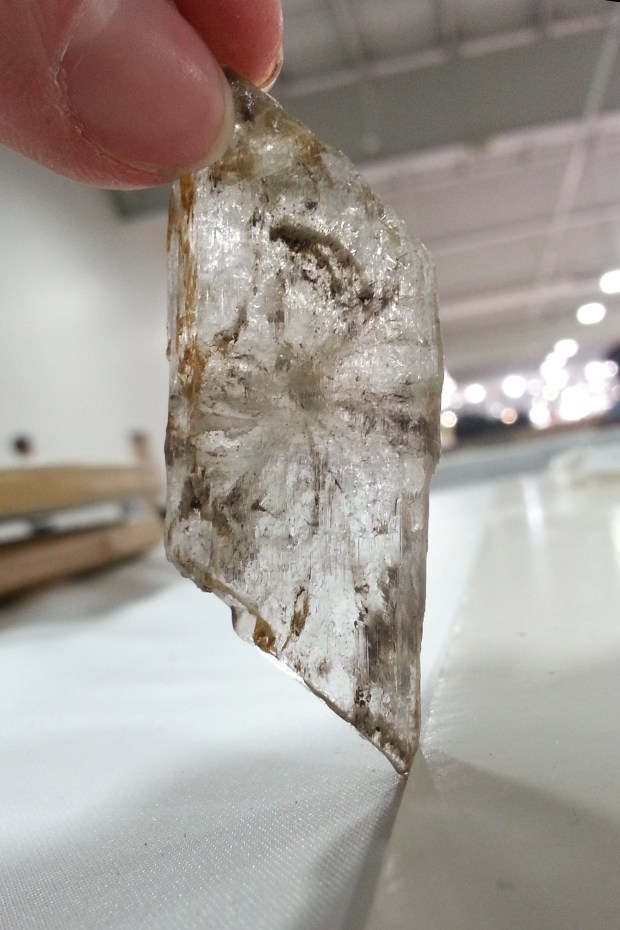
Selenite crystal from Kansas. I sold it at the Association Booth. Photo by Stephanie Reed

Shea Oak slab in UMKC’s petrified wood exhibit. This specimen usually lives at the Sutton Museum at UMKC. Photo by Stephanie Reed

A blue morpho butterfly seen at Butterflies by God. Photo by Stephanie Reed

The Bead Society had a lot of great cases. Photo by Stephanie Reed

Keshi pearls (i.e. non-nucleated pearls) from Avian Oasis. Photo by Stephanie Reed
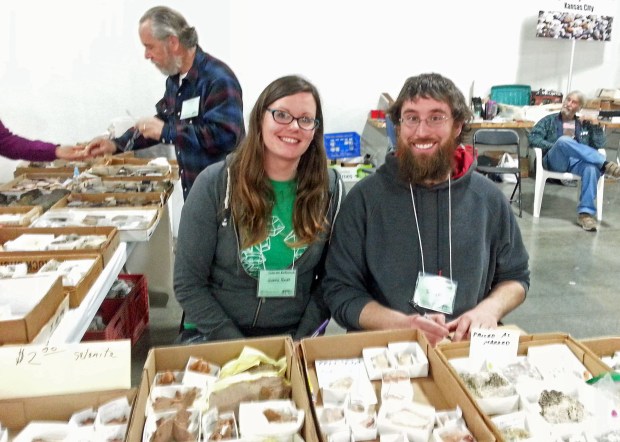
Jeanna and Jim in foreground, Chet and Bob in background. Photo by Stephanie Reed
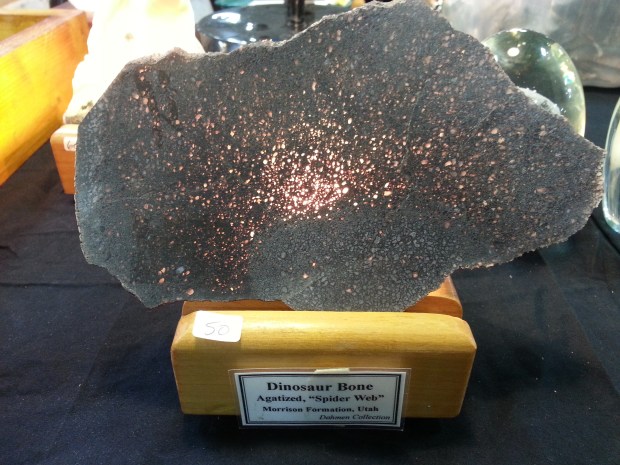
Agatized Dinosaur bone from the Morrison Formation in Utah, seen at Science Leads the Way. We met the person who found it. Photo by Stephanie Reed

Australian Boulder Opal cabs from Dreaming Down Under. Photo by Stephanie Reed
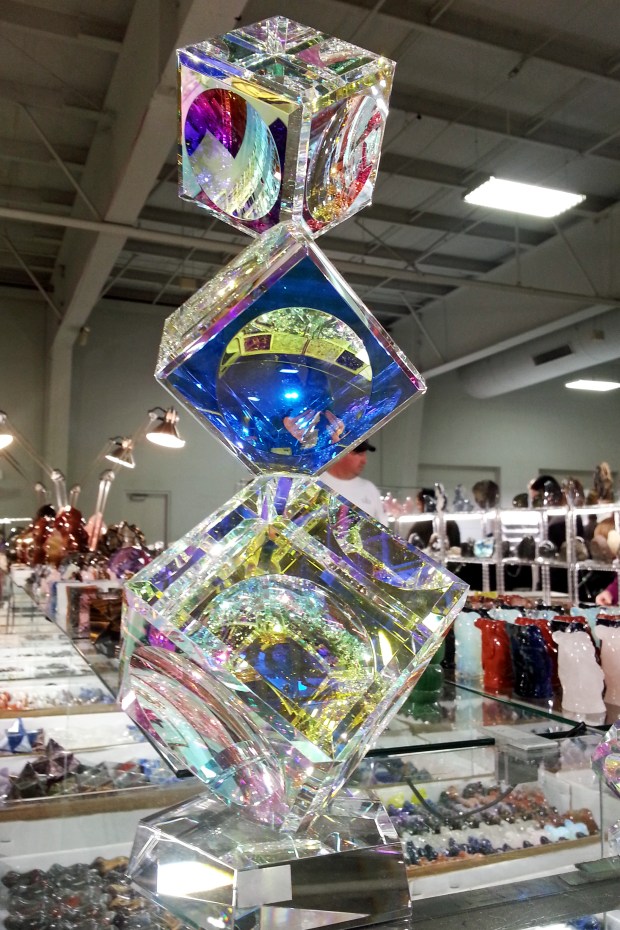
This otherworldly glass sculpture was at Madagascar Gemstones. Photo by Stephanie Reed
